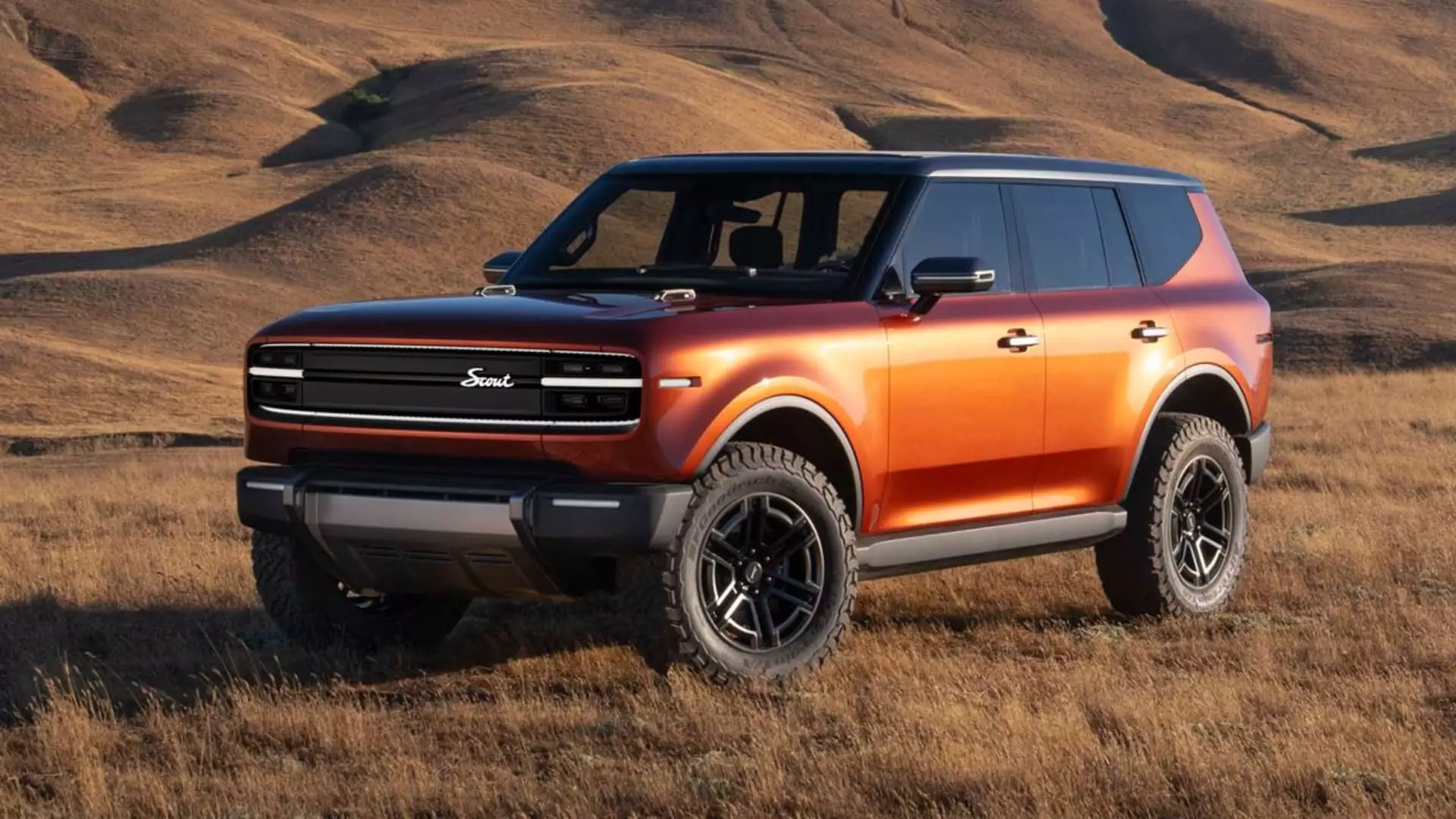The automotive industry is undergoing a radical transformation as more manufacturers pivot towards electric vehicles (EVs). Among these emerging players is Scout Motors, an ambitious brand brought back to life by Volkswagen that aims to carve out a niche in this competitive landscape. By unveiling its inaugural lineup of electric and extended-range electric vehicles (EREVs), Scout is not only revisiting its roots as a historic American brand but also adapting to the evolving market demands that characterize the future of car manufacturing.
Originally established from 1961 to 1980, Scout was a name synonymous with rugged American vehicles designed for various terrains. Volkswagen’s acquisition of the Scout trademark through its $3.7 billion deal with Navistar has reignited interest in this storied brand. In a bid to penetrate the U.S. market with a strong lineup of vehicles, Scout aims to revive the classic appeal of its predecessors while integrating cutting-edge technology and sustainability.
Scout Motors has announced a two-pronged strategy that includes a robust lineup of both electric and plug-in hybrid electric vehicles. CEO Scott Keogh has indicated that this shift is a response to the slower-than-anticipated adoption of EVs and the challenges posed by rising production costs. By introducing EREVs, Scout aims to broaden the appeal of electrification and offer an inherent ‘backup plan’ through traditional internal combustion engines that act as generators to keep the electric components functioning. This adaptive approach reflects a level of strategic savvy that could serve them well amid a shifting automotive landscape.
The inclusion of EREVs is a noteworthy strategic shift in the automotive market. EREVs are essentially advanced plug-in hybrids that combine an electric motor and battery with an internal combustion engine. This configuration provides flexibility by allowing drivers to cover substantial distances without the anxiety typically associated with fully electric vehicles—namely, range anxiety. With Scout’s planned EREVs boasting an impressive 500 miles of range compared to 300 miles for their fully electric counterparts, the company appears poised to attract a broader consumer base.
By capitalizing on this transitional technology, Scout is not just introducing sustainability; it’s embedding consumer confidence into its brand identity. As Keogh points out, this hybrid model can serve as an introduction to electrification for motorists who may be skeptical about fully electric options. This well-thought-out strategy may well enhance the overall market acceptance of electric mobility.
With plans to build a $2 billion manufacturing plant in South Carolina, Scout Motors aims for significant production capacity, targeting 200,000 vehicles annually. Given the painfully slow profitability trajectory faced by current market players like Rivian and Lucid, which report losses of tens of thousands of dollars per unit, Scout sets a bold goal to achieve operational profitability within the first full calendar year of production. Achieving this milestone would not only validate their market entry strategy but also position them favorably against the financial challenges faced by other EV startups.
Scout’s deliberate choice to bypass the traditional franchised dealership model for direct-to-consumer sales could also streamline costs and enhance customer engagement. This contemporary sales approach aligns with broader trends in consumer behavior, where buyers increasingly prefer online platforms for purchasing vehicles.
Scout’s initial offerings—the Traveler SUV and the Terra pickup truck—are designed to capture significant market share in highly lucrative segments while differentiating themselves from established competitors like Ford and GM. The American truck market is an archetype of profitability, and by targeting a starting price range of $50,000 to $60,000 with available incentives, Scout intends to attract budget-conscious consumers eager for innovative alternatives to traditional gas-powered trucks.
While the electric pickup market remains in its infancy, recent statistics show promising growth, albeit from a small base. With nearly 58,000 electric trucks and SUVs sold in the first half of the year—a 35% increase quarter-on-quarter—Scout’s decision to enter the space at this juncture showcases a sound understanding of market dynamics.
Moving forward, Scout Motors acknowledges the need for continuous innovation and expansion. According to Keogh, plans are already in place for additional models to follow the initial offerings. This agility and willingness to adapt to market needs are crucial in ensuring Scout’s relevance in an increasingly competitive landscape. As they roll out new vehicles, the focus on brand appeal combined with aggressive pricing could set the stage for Scout Motors to transform from a nostalgic revival into a mainstay in the automotive industry.
Scout Motors represents not just a continuation of a once-iconic name but a smart foray into the burgeoning electric vehicle marketplace. By integrating EREVs into their model range, focusing on production efficiency, and planning direct-to-consumer sales, they are well-prepared to meet the optimism and challenges that await in the electrifying future of mobility.


Leave a Reply